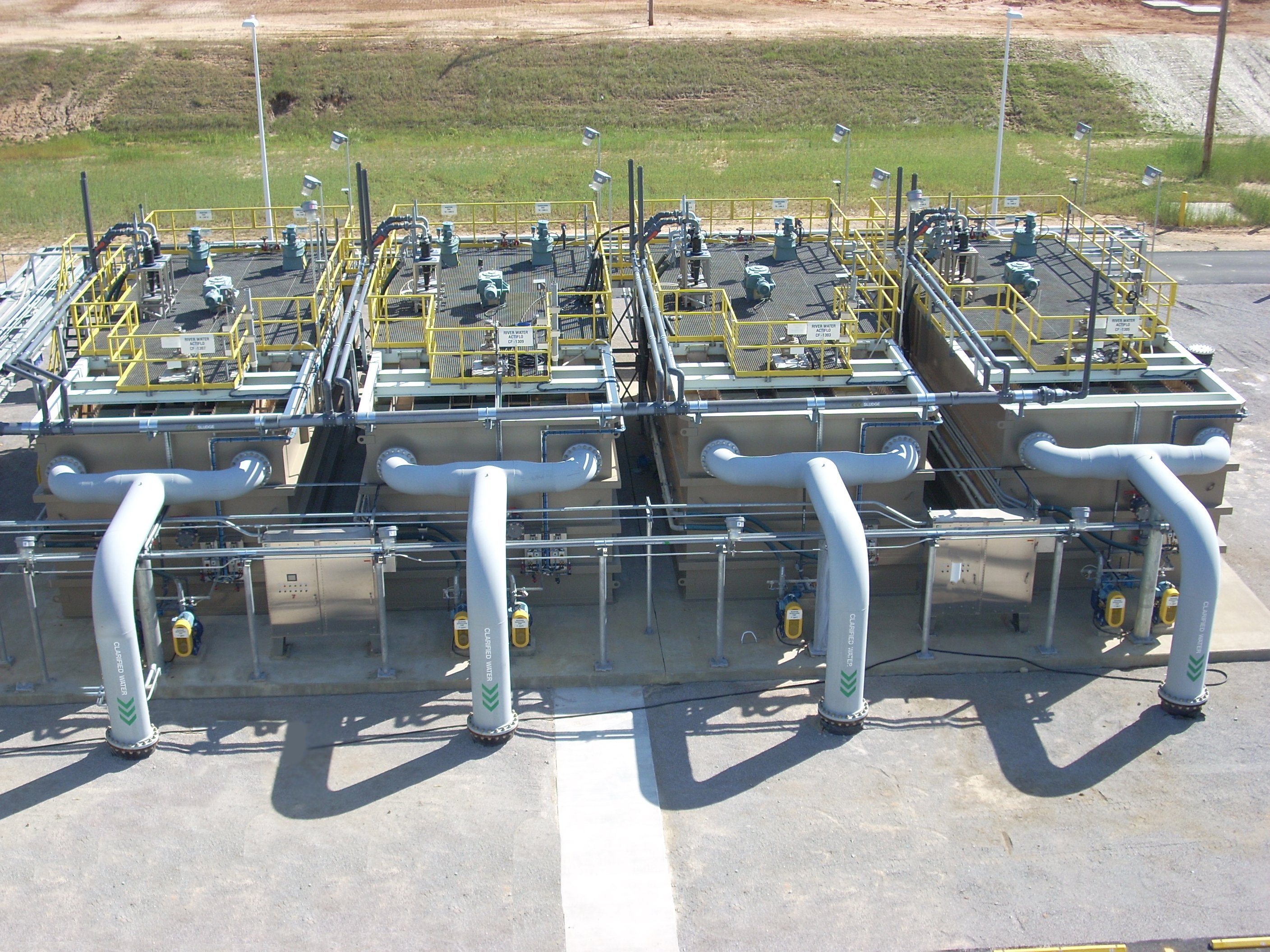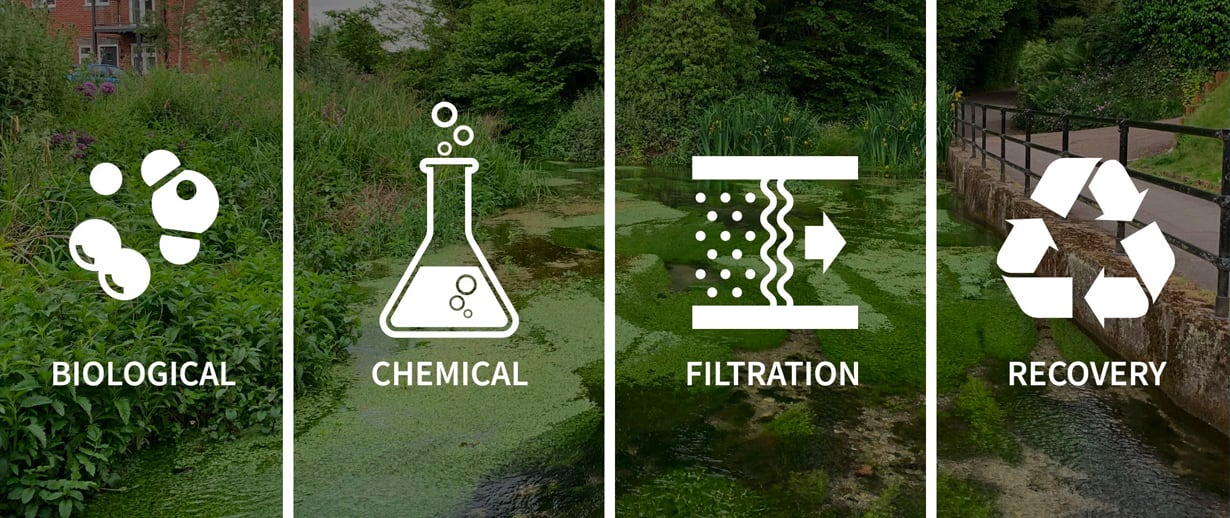The management of phosphorus in wastewater is essential for protecting the health of water courses and wildlife. To explain more about the current situation around phosphorus removal, we spoke to Matthew Langdon, our Municipal Business Development Manager. [Updated 2023]
Could you tell us a bit about your role at Veolia?
I joined Veolia in February 2020 as a Business Development Manager with a focus on the municipal water sector. I work with the water companies, their contractor partners and design consultants to look at how we can best meet their water treatment requirements. This may be through investment in new plants and equipment, our service offering or utilising digital services to streamline and optimise processes.
Why is it so important to address the issue of phosphorus in wastewater?

There are two important issues with phosphorus management. One is the impact that it has on the natural environment. Phosphorus can enter watercourses from a variety of sources, such as excess fertilisers being washed into rivers, as well as discharges from sewage treatment. If large quantities of phosphorus reach streams, rivers and lakes, it can cause the water to become too nutrient-rich and trigger algae blooms. This can deplete the oxygen in the water, resulting in the death of fish and other aquatic wildlife, and also block sunlight from reaching water-based plants.
The other issue is that we rely on phosphorus as a key ingredient in agricultural fertiliser and animal feed. However, it is a finite resource and a valuable mineral that is chiefly obtained from mining. None of these mines are located in the UK or even Europe, meaning there is a significant environmental impact due to importing from countries such as Morocco, China or the United States. In turn, this means that phosphorus recovery techniques combined with more responsible use of the mineral has a role to play in reducing the UK’s carbon footprint.
What has changed in AMP7, and what's next for AMP8?
The water industry has seen significant changes in AMP7 and is now preparing for AMP8. During AMP7, there has been increased focus on reducing sewage spills and managing extreme weather events. A key development was Ofwat's publication of draft methodology for PR24 in July 2022, setting 'stretching but achievable' performance targets for AMP8. The period has seen trends in CSO discharges, with 2023 recording 54% more sewage spills than 2022. Environmental challenges have intensified, with Met Office predictions suggesting extreme rainfall events could occur three times more frequently in southern UK and ten times more in northern Scotland by 2080. AMP8 will build upon AMP7's environmental and operational targets, with PR24 introducing new investment demands to achieve the sector's long-term goals. The focus has shifted towards implementing innovative solutions and improving wastewater systems to meet these challenges, particularly in areas of CSO management and treatment process optimisation.
What options are there for phosphorus management?
There are a number of ways to reduce the levels of phosphorus in the environment. One part of this is catchment management, where water companies work with local landowners and farmers to limit the amount of runoff of fertilisers from fields into the water network.
In terms of wastewater treatment solutions, there are several options available. Chemical-based technologies that use a metal salt coagulant to allow the removal of phosphorus as a solid are a common approach. This includes solutions such as our Actiflo® sand ballasted clarification system, which is ideal for sites that need to meet very low phosphorus consent levels.

Also, for sites where further treatment is required to meet the tightened standard, additional steps can be added. For example, filtration systems such as our Discfilter technology can be used either in pre-treatment or as a tertiary step, depending on the requirements of the site.
 It is also possible to harness biological processes to remove phosphorus, including algae-based systems. This is a chemical-free solution that has the added advantage of capturing carbon dioxide as well as producing biomass that can be sold for a range of applications.
It is also possible to harness biological processes to remove phosphorus, including algae-based systems. This is a chemical-free solution that has the added advantage of capturing carbon dioxide as well as producing biomass that can be sold for a range of applications.
Finally, there is also the option of phosphorus recovery processes that enable the reuse of this valuable resource. This process allows the phosphorus to be extracted from the wastewater as the phosphate mineral struvite.
What are the benefits of phosphorus recovery?
The main advantage of this process for water companies is that it minimises the cost of sludge disposal, while also creating a source of income through the sale of the struvite for reuse in fertiliser production. This additional revenue helps offset the initial capital cost, so the payback period of this technology is relatively short.
It also helps reduce the environmental impact through reduced sludge production and contributes to creating a circular economy in the manufacturing and use of fertilisers, which are essential for growing the food the UK needs.
What is the future of phosphorus management?

Water consents will only continue to become tighter in the coming years and we may see another reduction in the permitted levels for the next AMP. For this reason, it is important that water companies look ahead when investing in new plant equipment to ensure the chosen solutions will allow easy and cost-effective upgrades to meet future demands.
Recovery and reuse are set to become a bigger part of the industry as green technologies and the creation of a circular economy for resource gains have increased attention. It is also important to highlight that approaches to phosphorus management are still evolving, and leading technology providers, including Veolia, are investing heavily in research and development to create the next generation of treatment solutions.
How can Veolia help?
We have a global network of resources and experience that allows us to draw upon best practices and advancements from around the world. This, combined with our already wide range of solutions, means we can always offer the best option for any site and to meet any requirements. We have created packaged, standardised solutions that mean design and engineering time can be reduced - allowing more effective use of financial resources.
We also offer end-to-end support for the project from expert guidance on proposals to ongoing servicing carried out by our dedicated team of engineers. We also offer process guarantees, which provide peace of mind that the required performance will consistently be achieved.
Want to chat to one of our experts? See here.